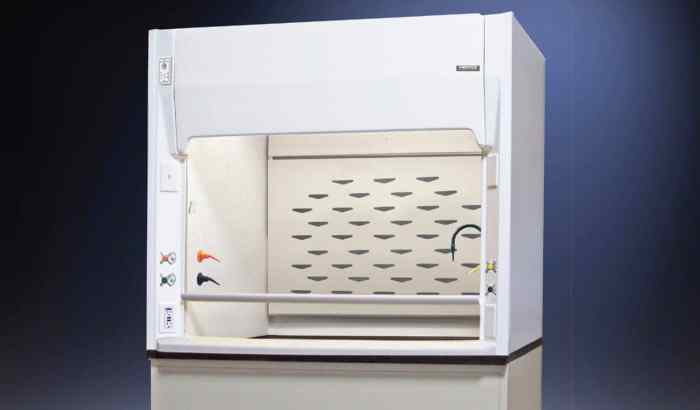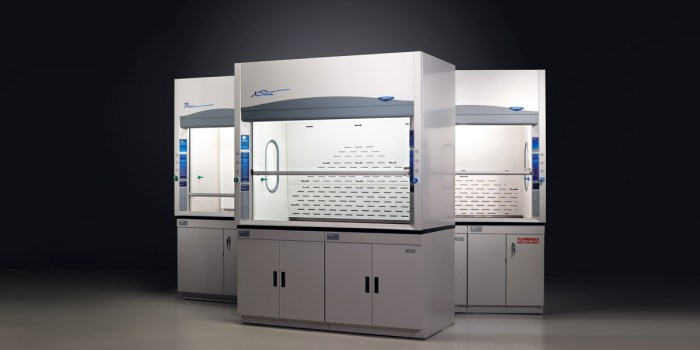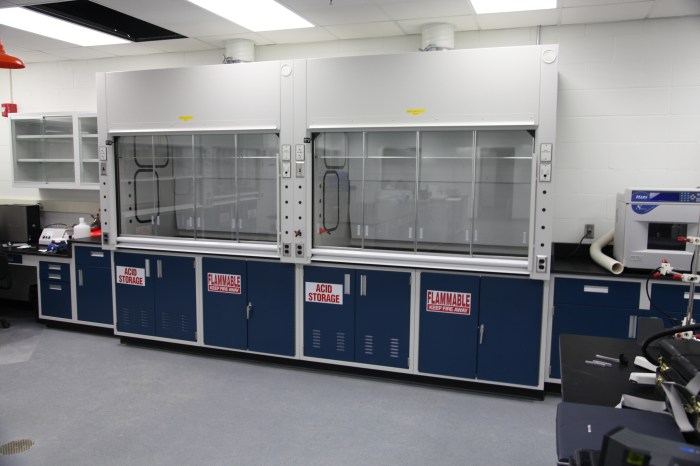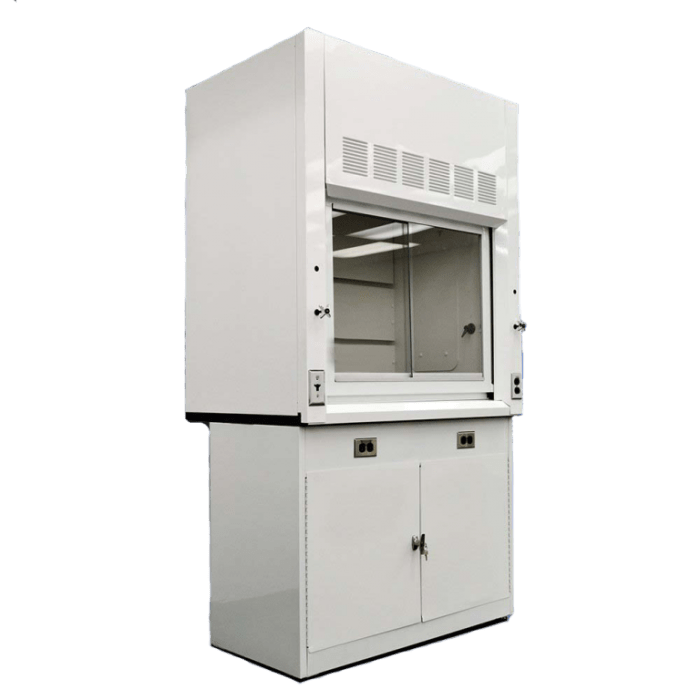Fume hood substitute at home – When working with chemicals at home, protecting yourself from hazardous fumes is paramount. Fume hoods, traditionally found in laboratories, can be expensive and impractical for home use. Fortunately, there are several effective fume hood substitutes that can be implemented with ease and affordability.
This guide will delve into the world of DIY fume hood alternatives, providing you with the knowledge and resources to create a safe and well-ventilated workspace in your own home.
From constructing a simple DIY fume hood using readily available materials to harnessing the power of natural ventilation, we’ll explore various methods to effectively manage fumes and odors. We’ll also discuss the importance of chemical fume management, safety considerations, and best practices to minimize exposure to harmful vapors.
Alternative Ventilation Systems
Alternative ventilation systems provide effective solutions for maintaining adequate airflow and removing hazardous fumes in home environments where traditional fume hoods are impractical or unavailable. These systems employ various principles to circulate air and mitigate the risks associated with chemical exposure.
Let’s explore the different types of alternative ventilation systems and their respective advantages and disadvantages:
Local Exhaust Ventilation (LEV)
LEV systems focus on capturing and removing fumes directly from their source. They employ a combination of hoods, ducts, and fans to draw contaminated air away from the user’s breathing zone and exhaust it outside.
Advantages:
- Highly effective in controlling fumes at the point of generation.
- Protects users from exposure to hazardous substances.
Disadvantages:
- Can be expensive to install and maintain.
- May require specialized expertise for design and installation.
Portable Fume Extractors
Portable fume extractors are compact, self-contained units that provide localized ventilation. They are equipped with a fan and filter to remove fumes and contaminants from the air.
Advantages:
- Highly portable and easy to use.
- Suitable for small-scale applications or when fixed ventilation is not feasible.
Disadvantages:
- May not be as effective as fixed LEV systems.
- Filters require regular maintenance and replacement.
Air Purifiers
Air purifiers use filters or other technologies to remove particles and contaminants from the air. They can be used to supplement ventilation systems or provide additional protection against fumes.
Advantages:
- Relatively inexpensive and easy to use.
- Can help reduce the concentration of airborne particles and fumes.
Disadvantages:
- Not as effective as dedicated ventilation systems in removing fumes.
- Filters require regular cleaning or replacement.
DIY Fume Hood Designs
Constructing a simple DIY fume hood at home requires careful planning and execution. With readily available materials and clear step-by-step instructions, you can create a functional fume hood that effectively removes harmful fumes and vapors from your workspace.
Materials and Tools
- Corrugated cardboard box (large enough to fit your equipment)
- Plastic sheeting or tarp
- Duct tape
- Box fan
- Scissors or utility knife
- Optional: activated carbon filter
Step-by-Step Instructions
- Prepare the box:Cut one side of the cardboard box to create an opening for the box fan. Seal any gaps around the opening with duct tape.
- Line the box:Cover the inside of the box with plastic sheeting or tarp to create a smooth and impermeable surface.
- Install the box fan:Place the box fan in the opening and secure it with duct tape. Ensure that the fan is facing outwards to exhaust the fumes.
- Create an exhaust port:Cut a hole in the opposite side of the box to create an exhaust port. The size of the hole should be slightly larger than the diameter of your exhaust hose or duct.
- Connect the exhaust hose:Attach an exhaust hose or duct to the exhaust port and extend it outside your workspace to release the fumes.
- Optional: Add activated carbon filter:If desired, you can place an activated carbon filter inside the fume hood to absorb harmful chemicals and vapors.
Safety Precautions and Proper Ventilation Techniques
When using a DIY fume hood, it is crucial to prioritize safety and ensure proper ventilation. Always wear appropriate personal protective equipment (PPE) such as gloves and a mask to avoid exposure to hazardous fumes. Position the fume hood in a well-ventilated area with ample airflow to prevent the accumulation of fumes in your workspace.
Natural Ventilation Techniques

Natural ventilation is a cost-effective and energy-efficient way to reduce fumes and odors in the home. By utilizing natural air currents, you can create a healthier and more comfortable indoor environment.
Increasing Air Circulation, Fume hood substitute at home
Open windows and doors on opposite sides of the house to create a cross-breeze. This will allow fresh air to enter and stale air to escape.
Use fans to circulate air throughout the house. Ceiling fans can be used to create a downward airflow, while box fans can be placed in windows to draw air in or out.
Improving Indoor Air Quality
Plants can help to remove pollutants from the air. Place plants in areas where you experience odors or fumes.
When working with chemicals at home, it’s crucial to have a fume hood to protect yourself from harmful vapors. If you don’t have access to a fume hood, there are a few substitutes you can use, such as opening windows and doors for ventilation.
If you’re looking for a more natural way to alleviate acid reflux, consider trying castor oil . It’s known for its anti-inflammatory properties and may help reduce discomfort. Remember, when using chemical substitutes at home, always prioritize safety and follow proper ventilation guidelines.
Baking soda can also be used to absorb odors. Place a bowl of baking soda in areas where you notice strong smells.
Limitations of Natural Ventilation
While natural ventilation can be effective in reducing fumes and odors, it is important to note its limitations:
- Natural ventilation is not always possible, especially during extreme weather conditions.
- Natural ventilation may not be sufficient to remove all fumes and odors, particularly from strong sources.
- Natural ventilation can allow outdoor pollutants to enter the home.
In cases where natural ventilation is not sufficient, additional measures may be necessary, such as using a fume hood or air purifier.
Air Purifiers and Filtration Systems

Air purifiers and filtration systems are effective devices for removing fumes and odors from indoor air. They utilize various technologies to capture and eliminate airborne particles and pollutants, providing a cleaner and healthier environment.
Different types of air purifiers and filtration systems are available, each with its own advantages and applications.
Types of Air Purifiers and Filtration Systems
- Mechanical Filters:These filters physically trap particles, such as dust, pollen, and pet dander, as air passes through them. Examples include HEPA (High-Efficiency Particulate Air) filters and MERV (Minimum Efficiency Reporting Value) filters.
- Electrostatic Precipitators:These devices use an electrical charge to attract and collect airborne particles, including fumes and smoke.
- Activated Carbon Filters:These filters contain activated carbon, a highly porous material that adsorbs fumes, odors, and gases.
- Photocatalytic Oxidation (PCO) Systems:These systems use ultraviolet light to generate reactive oxygen species that break down fumes and pollutants.
- Ionic Air Purifiers:These devices release negative ions into the air, which attach to airborne particles and cause them to clump together and fall out of the air.
Selecting the Appropriate System for Home Use
When choosing an air purifier or filtration system for home use, consider the following factors:
- Room Size:Determine the size of the room where the system will be used to select a unit with an appropriate capacity.
- Type of Fumes and Odors:Identify the specific fumes or odors that need to be removed to choose a system with the appropriate filtration technology.
- Budget:Air purifiers and filtration systems vary in price, so set a budget before making a purchase.
- Maintenance Requirements:Consider the ongoing maintenance costs, such as filter replacements and cleaning, associated with different systems.
Chemical Fume Management

Managing chemical fumes at home is crucial to ensure a safe and healthy environment. Here are best practices to minimize exposure and environmental impact.
Proper handling and storage of chemicals that produce fumes is essential. Keep chemicals in their original containers with tight-fitting lids. Store them in a cool, well-ventilated area away from direct sunlight and heat sources. Segregate incompatible chemicals to prevent accidental reactions.
Disposal Methods
Proper disposal of chemicals is vital to minimize environmental impact. Never pour chemicals down the drain or dispose of them in household trash. Contact local waste management authorities for guidance on proper disposal methods, which may include specialized waste collection services or designated drop-off points.
Minimizing Exposure
Minimizing exposure to chemical fumes is crucial for health and safety. Use chemicals in well-ventilated areas or consider using a fume hood substitute, such as an open window or fan. Wear appropriate personal protective equipment (PPE), such as gloves, eye protection, and a respirator, when handling chemicals that produce fumes.
Safety Considerations: Fume Hood Substitute At Home

When working with fumes, prioritizing safety is paramount. Proper ventilation, protective gear, and emergency procedures are crucial to minimize health risks.
Exposure to fumes can pose severe health hazards, ranging from respiratory irritation to long-term chronic conditions. Therefore, adhering to safety guidelines is essential.
Proper Ventilation
- Ensure adequate ventilation in the work area to disperse fumes effectively.
- Use fume hoods or alternative ventilation systems to capture and exhaust fumes.
- Open windows and doors to provide natural ventilation, but avoid creating drafts that could disrupt fume dispersion.
Protective Gear
- Wear appropriate respiratory protection, such as respirators or masks, to prevent inhalation of fumes.
- Use chemical-resistant gloves and protective clothing to minimize skin contact with fumes.
- Consider eye protection, such as goggles or safety glasses, to prevent eye irritation.
Emergency Procedures
- In case of fume exposure, move to a well-ventilated area immediately.
- Seek medical attention promptly if experiencing any symptoms, such as respiratory distress or skin irritation.
- Have emergency contact information readily available, including poison control centers or medical professionals.
Top FAQs
Can I use a kitchen exhaust fan as a fume hood substitute?
While kitchen exhaust fans provide some ventilation, they are not a suitable substitute for a fume hood. They lack the necessary safety features and may not effectively remove hazardous fumes.
How often should I replace the filters in my DIY fume hood?
Filter replacement frequency depends on usage and the type of fumes being generated. As a general rule, replace filters every 3-6 months or when they become visibly dirty.
What are the potential health risks of fume exposure?
Fume exposure can cause various health issues, including respiratory irritation, headaches, dizziness, and long-term damage to organs such as the lungs, liver, and kidneys.